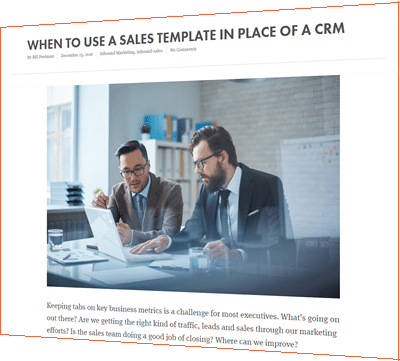Myth 1 – Inbound Marketing is just another term for SEO
Another common misconception is that it’s another term for content marketing. Inbound marketing involves both SEO and content marketing, but it’s also about analytics, social media, a great website, and effective lead nurturing. It’s a “big picture” kind of thing.
Myth 2 – Inbound Marketing is just another marketing tactic
It is, in fact, a strategy. And, because of the measurement and analytics (hinted at above), it’s been shown, time and time again, to be effective. And to be clear, it’s not like an SEO “strategy,” where we know we need keywords and to try a lot of unconnected things, and then hope for the best because we don’t really know what search engines want. There are clear components, recipes, and strategies to effectively execute inbound marketing. The trick is to getting the right ingredients for your business.
Myth 3 – Hiring an inbound agency is too expensive
Ok, you’re right, it’s not cheap. But consider this: would you rather spend $3,000/month on ONE marketing employee who needs months of training and a benefits package, or would you rather spend $3,000/month on a team of marketing professionals who already know what they’re doing and have a plan laid out to make it work for you?
Myth 4 – Inbound Marketing is simply throwing out tons and tons of content until someone finds it valuable
No, no, no! That method is no better than flashing banner ads. It’s wasted resources and doesn’t provide the kind fo quality leads we want. The content that is written is done so for a very specified audience (found through buyer personas) to answer questions or problems that they have. Then, the content is pushed through email to people we know are in that category, and through social media, but only to the sites where we know that audience participates. Therefore, we know that the content we create is not only valuable to the majority of the audience, but that it reaches them.
Myth 5 – Inbound Marketing only works for certain kinds of companies
The concepts of inbound marketing work across any industry, whether B2B, B2C, or somewhere in between. It doesn’t matter if your company markets locally or internationally, inbound marketing works. The key to a company successfully implementing inbound marketing? Customer focus. If your company has a focus on customer satisfaction, inbound marketing can work for you.
Myth 6 – I know my marketing works – I have no guarantee with Inbound Marketing
True, in fact, you don’t have any guarantee with any kind of marketing. But here’s an interesting fact: Inbound marketing costs 62% less than outbound. Average cost-per-lead of outbound marketing is $373; inbound? $143 (HubSpot, 2011). On top of that, 79% of companies who have a blog reported a positive ROI from it this year. Sure, there’s no guarantee it’ll work for you, but there’s also no guarantee it won’t.
Myth 7 – Blogging is only useful for SEO purposes and getting more pages indexed in Google. Nobody actually reads them and they don’t really help get customers.
False! Companies that blog get 55% more traffic and 70% more leads than those who don’t. 57% of companies have acquired a customer through their blog (Noha, 2012). Why? Because people really do read them:
- 65% of daily internet users read blogs
- 46% of daily internet users read more than one blog per day
- 36% of daily internet users real 5-10 blogs per day
Myth 8 – Inbound Marketing doesn’t work for local businesses
If you create the right strategy (local search, localized long-tail keywords, Facebook, LinkedIn, localized offers) inbound marketing can be highly successful for small local businesses. It can even work for contractors and free-lancing workers. Consider this: 62% of internet users search online before they make a purchase, even when the purchase is made at a local business.





